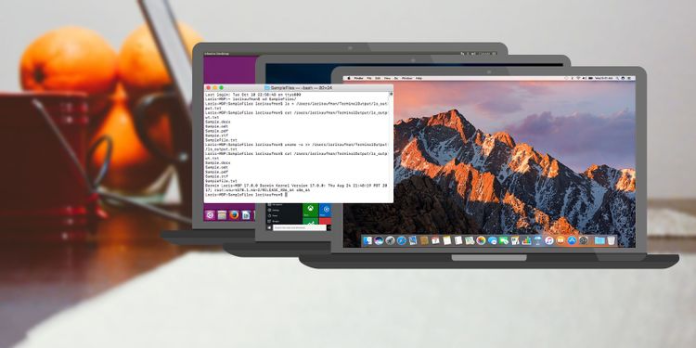Here we can see, “How to save command output to file using Command Prompt or PowerShell”
The ability to save the output of a PowerShell or Command Prompt command to a text file in Windows 10 is useful in various situations. For example, it’s a convenient way to export and analyze command output when troubleshooting a problem, or you can share the output with someone else who can help. In addition, you can save system configurations for documentation by printing command output to a text file, among other things.
Although you could select the content, right-click it to copy it to the clipboard, and then paste it into a text file, this method requires additional steps to avoid using the redirected output to file function on a single command line.
How to save command output to file using Command Prompt
Follow these steps to save command output to a text file using Command Prompt:
- Start the program.
- Right-click the top result in the search for Command Prompt and choose Run as administrator.
- To save the output to a text file, type the following command and press Enter:
YOUR-COMMAND > c:\PATH\TO\FOLDER\OUTPUT.txt
Replace “YOUR-COMMAND” with your command line and “c:\PATH\TO\FOLDER\OUTPUT.txt” with the path and file name to save the output in the command.
4. (Optional) Use this command and press Enter if you want to save the output and view it on the screen:
YOUR-COMMAND > c:\PATH\TO\FOLDER\OUTPUT.txt | type c:\PATH\TO\FOLDER\OUTPUT.txt
Replace “YOUR-COMMAND” with your command line and “c:\PATH\TO\FOLDER\OUTPUT.txt” with the path and filename to save and view the output in the command.
The command output will be saved into a text file, which you can review or share with tech support once you’ve completed the steps.
How to save command output to file using PowerShell
Follow these steps to save command output to a text file in PowerShell:
- Start the program.
- Right-click the top result in the search for PowerShell and choose Run as administrator.
- To save the output to a text file, type the following command and press Enter:
YOUR-COMMAND | Out-File -FilePath c:\PATH\TO\FOLDER\OUTPUT.txt
Replace “YOUR-COMMAND” with the command line you want, and “c:\PATH\TO\FOLDER\OUTPUT.txt” with the path and file name where you want the output saved.
4. (Optional) To view the saved output on the screen, type the following command and press Enter:
Get-Content -Path c:\PATH\TO\FOLDER\OUTPUT.txt
Replace “c:\PATH\TO\FOLDER\OUTPUT.txt” with the path and file name with the output content in the command.
After completing the steps, the PowerShell command will save the result to the specified location in a text file.
This guide focuses on Windows 10, but the instructions can also be applied to Windows 8.1 and 7.
Conclusion
I hope you found this information helpful. Please fill out the form below if you have any questions or comments.
User Questions:
- How do you save a command’s output to a file in CMD?
Any command that produces a command window output (no matter how large or small) can be followed by > filename. Txt, which will save the output to the specified text file.
- In CMD, how do you save a file?
Select “Save As” from the File menu to save the batch file to your desktop. Click “Save” and give the file the name “first script. Cmd.” Script commands in Notepad must be saved with the. cmd extension instead of the default.
- What command do you use to make a file?
In Linux, the Cat command is used to create a file. It’s the abbreviation for concatenate. It assists us in the creation of both single and multiple files. It also allows us to view file contents and redirect output to files.
- A way to save a session’s PowerShell commands and output
way to save powershell commands and output for a session from PowerShell
- run ps1 from a batch file and save PS console output to a text file (as admin)
run ps1 from batch file and save PS console output to txt file (as admin) from PowerShell



